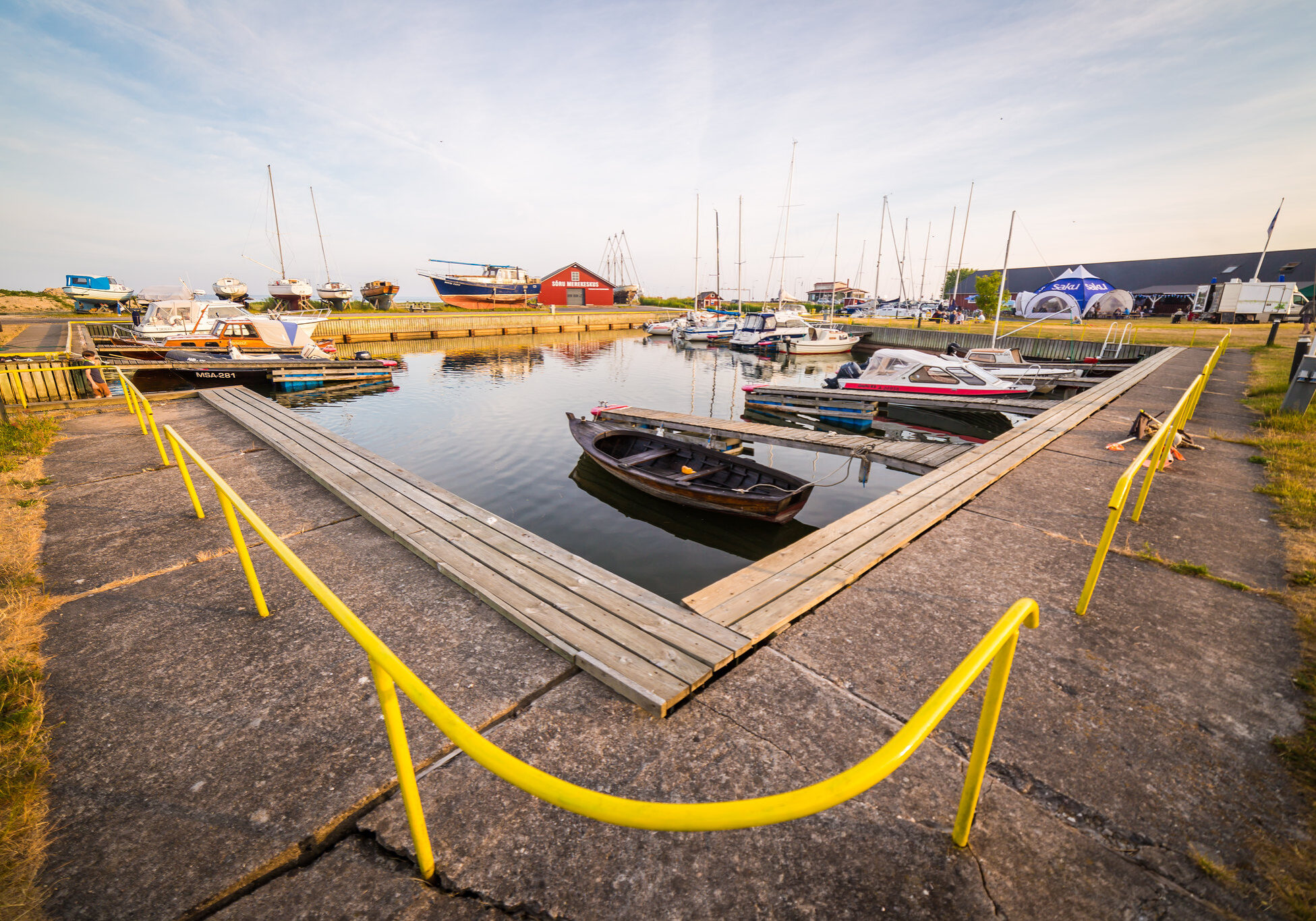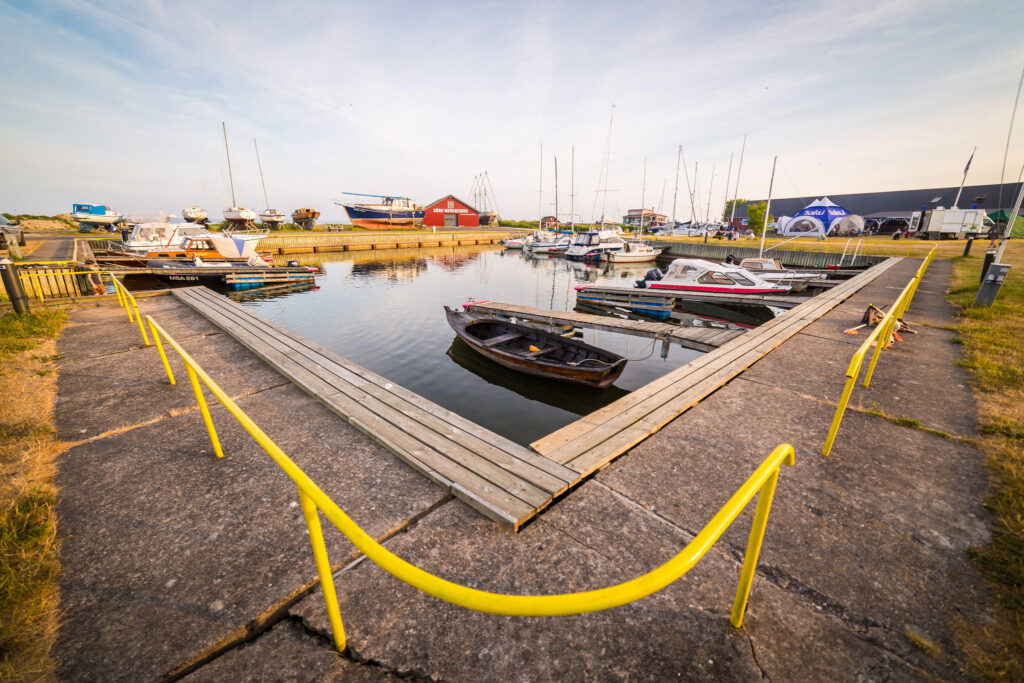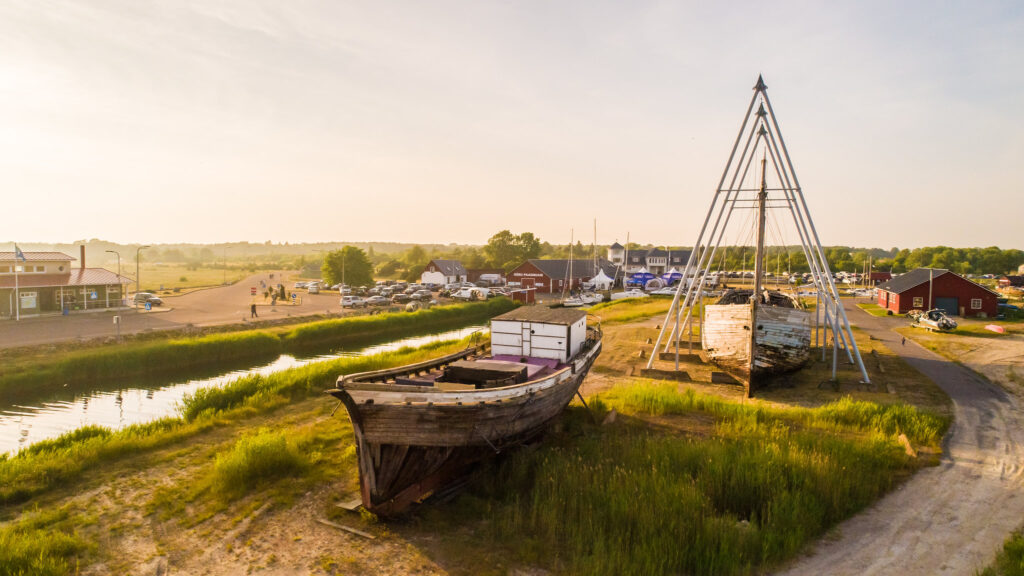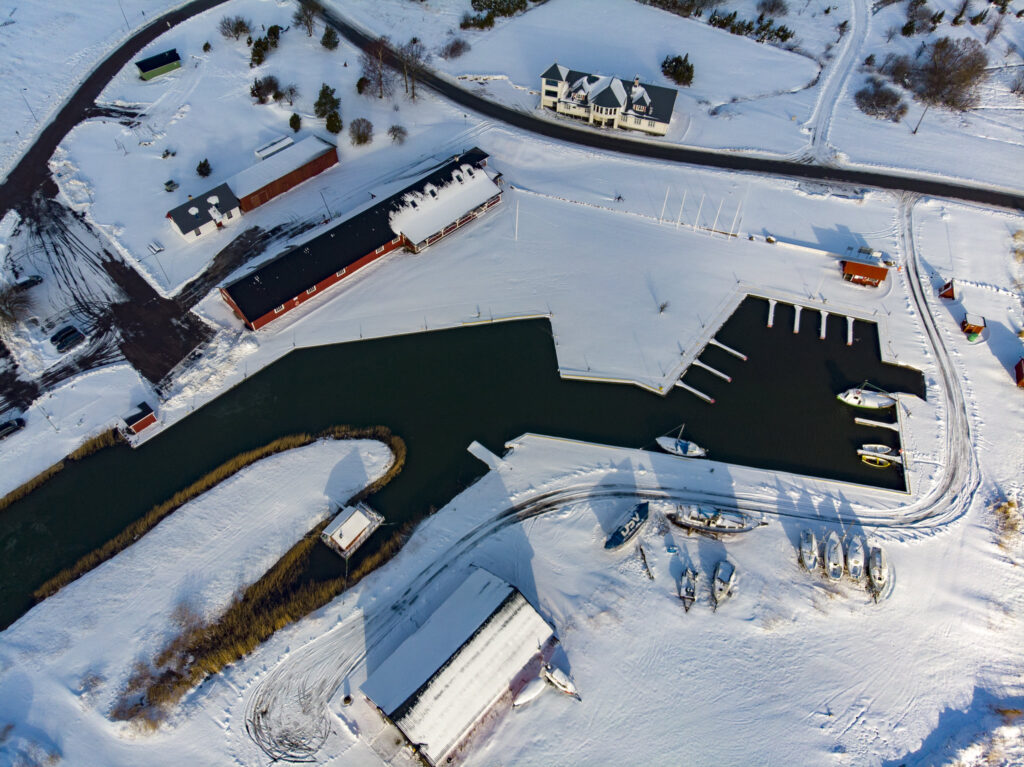Sõru marina

Within the territory of the marina there are the sailing ship „Alar“ and its renovation hall, Sõru Maritime Museum, the port tavern, the passenger and yacht harbors, the harbor building together with a shop, a floating sauna, the beach and a camping ground.
There is a saying: “The people of Hiiumaa live on water, unless they happen to live on solid ground”. During the Swedish rule, two men from the Emeste farm – Bernth and Hans – worked as ferrymen taking passengers across to Saaremaa. The name Emmaste, which later became the name of the manor estate established by Jakob Pontus Stenbock (1779) and in the 19th century the name of the parish, derives from that very Emeste farm. Emmaste parish was separated from Käina parish in 1866. The place-name Sõru was first mentioned in writing in 1254. Sõru has had its own chapel, a cemetery, a landing place for fishing boats, and a wharf (1917). The seaside used to be lined with sheds for keeping nets, wells and windmills. There used to be, at different periods of time, also a school, a frontier guard station, a pub, a liquor store, a cinema, a fish receiving centre, and the office of the coastal fishing brigade in Sõru.
Nowadays one can admire the spectacular sea view from the village road and the Tohvri seamarks (1934). There are still traces of cannon batteries, barracks and outhouses from the period of World War I. as well as WWII. Typically of the natural and cultural environment of Baltic Sea islands, the traditional lifestyle of Hiiumaa involved ship building, seafaring and fishing, complemented by the local Hiiu language and customs. Sõru Museum offers a historical overview of this maritime lifestyle. Before WW I. the men of Emmaste parish had more than 55 ships, and 153 captains are known to have come from this area. The three-masted Alar, a unique monument of Estonian maritime history, is based here at Sõru. Alar is unique as the only remaining wooden ship built in Estonia before WW II. The pine deal for building the ship was brought from the village of Õngu, the oak wood from Saaremaa. The ship was built under the supervision of shipmaster Peeter Himmist, and was launched at Õngu beach in 1938. Alar is 30m long, 7 m wide and has a tonnage of 270 t. The ship had a 125 hp Swedish Bolinder engine. Alar sailed the world seas until 1968.
In 1944, over 700 people fled from Hiiumaa to Sweden. The dynasties of ship builders and seafarers from Hiiumaa became obsolete during the Soviet occupation, although the fishermen of the Hiiu Kalur collective farm caught fish across the oceans all the way to the western coast of Africa. Hiiumaa itself was a restricted border area, which meant that fishermen were allowed to go to sea only by special permits issued by the frontier guard. The interest of the local people in their own cultural heritage found a new incentive in 1998, when the miraculously survived Alar was brought back home from Hobro, Denmark after half a century of exile, in order to be renovated.
Nowadays, the former collective farm fish receiving centre (1958) houses the port tavern and the boat shed which is used as a concert and summer event venue. In 1999, the former building of the Hiiu Kalur brigade office and village cinema was turned into a museum; the building was rebuilt in 2006. The museum’s collection consists of more than 4,000 valuable items, historical ship documents, photos of local seafarers, fishermen as well as the everyday life and feasts of the seaside village community, pieces of art made by seamen, their love letters and songs. The exhibition halls offer inspiring views of the sea and the coastal landscape.
Gallery
It is a waypoint on the journey
You might also be interested in:





